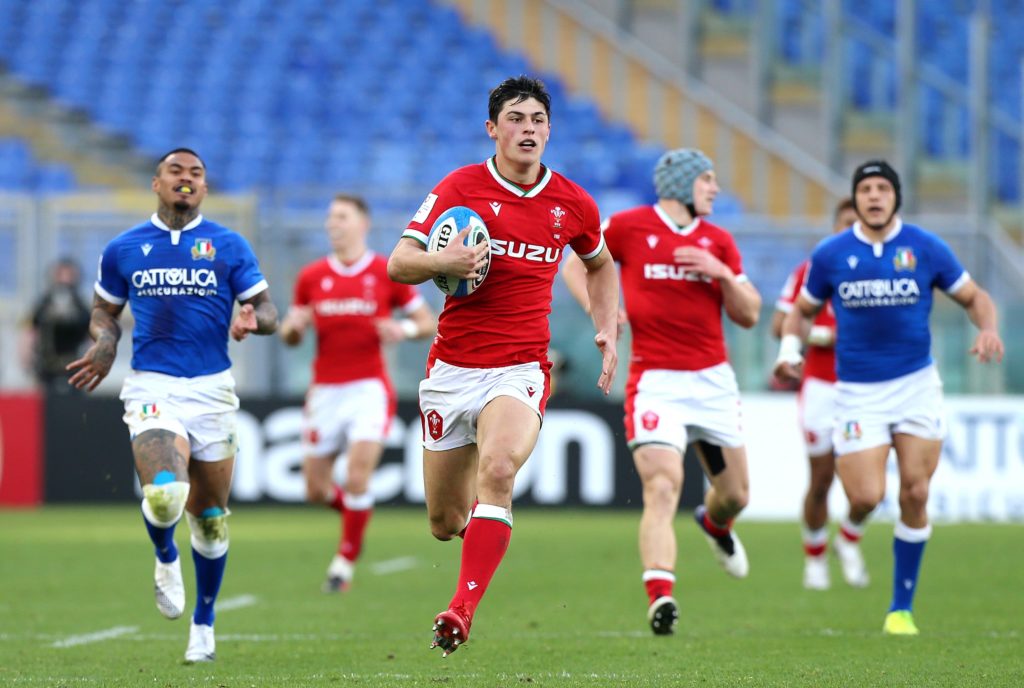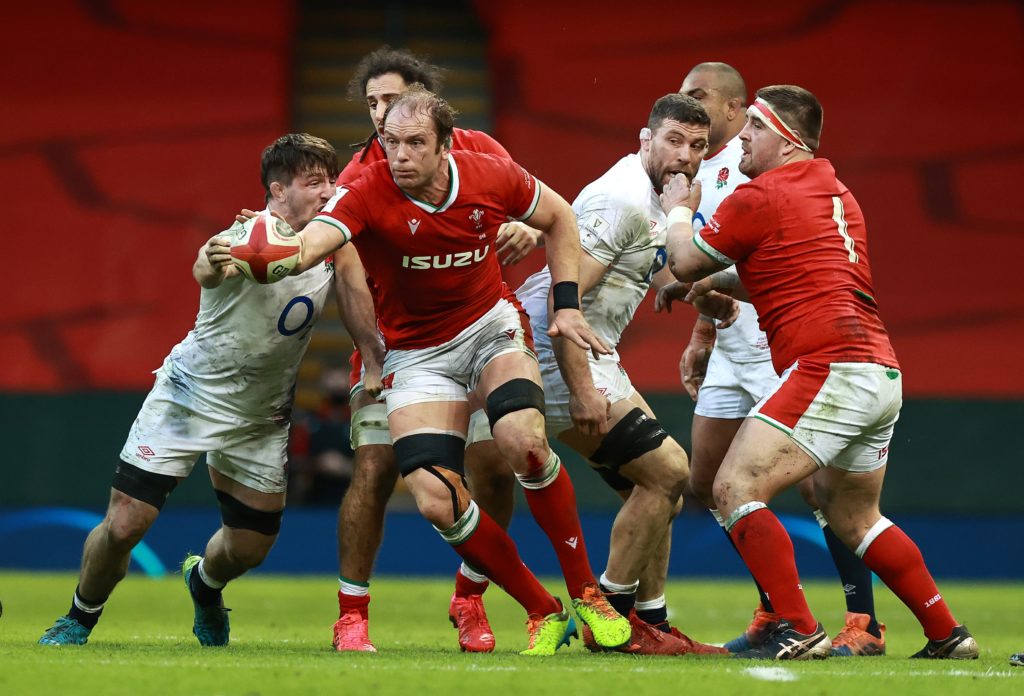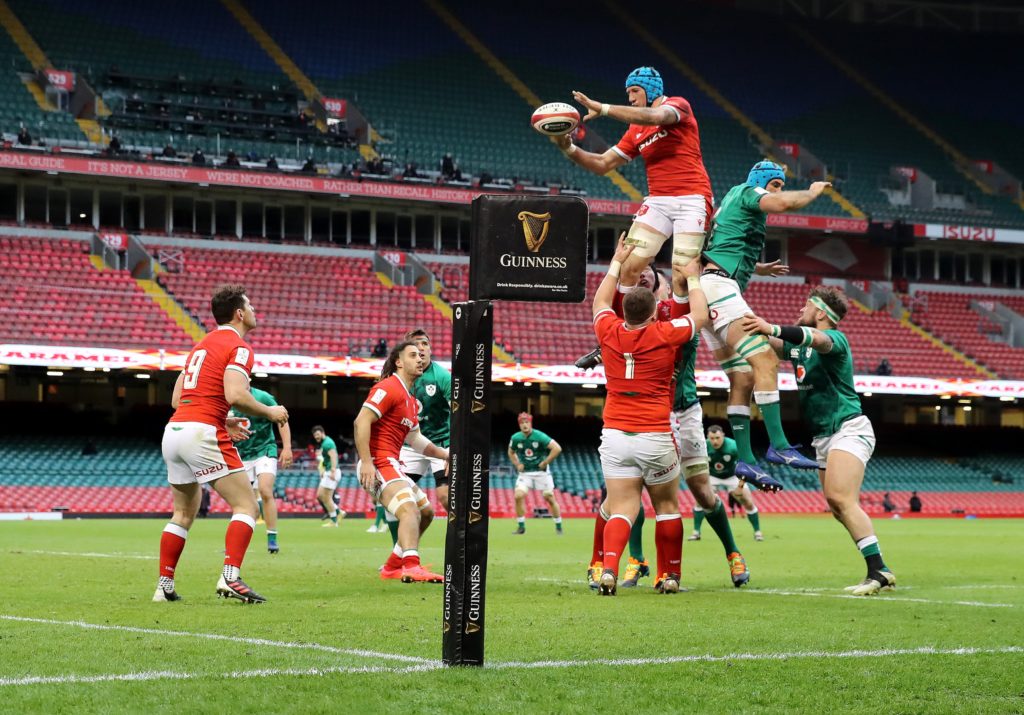The elixir of eternal youth has been sought for thousands of years but, as yet, there has been no cure for humankind’s irreversible decline. One man who appears to be bucking that trend is Wayne Pivac. In the depths of winter, he appeared grey, embattled and almost forlorn as Wales’ results took a nosedive, but as we tiptoe tentatively into spring, the former Scarlets coach appears to be blossoming. After four consecutive wins, he can afford to crack jokes and shoot the breeze, validated by a clutch of potentially ruinous decisions after a year of experimentation.
So where has it all gone so right?
Well, who needs Oil of Olay, when you have (red) mist of O’Mahony?
Yes, the one man the Aucklander ought to thank before anyone else isn’t Welsh, he’s Irish. Peter O’Mahony’s rush of blood to the head and subsequent red card served as the catalyst for a reversal of fortunes for Wales as they rode Irish dominance to fashion a nervy win. Lightning struck twice when Zander Fagerson’s ill-timed clearout saw him heading for the sheds early enough for Louis Rees-Zammit to exploit space on the right flank and glide past Duhan van der Merwe. In 12 exhilarating seconds, he went from talented ingenue to potential superstar and Lions contender.
Against England, they had the rub of the green, again, through Pascale Gaüzère’s contentious refereeing decisions but when both sides drew level at 24-24 after 62 minutes, it wasn’t the 2019 World Cup finalists who pulled away, it was Wales.
Against England, they had the rub of the green, again, through Pascale Gaüzère’s contentious refereeing decisions but when both sides drew level at 24-24 after 62 minutes, it wasn’t the 2019 World Cup finalists who pulled away, it was Wales, as Callum Sheedy – one of the players Pivac had promoted over the past 12 months – kicked Wales into an unassailable lead and Cory Hill added the coup de grâce, with England flailing.

Those last 18 minutes gave a Welsh side belief, which they carried to Rome, where their enterprise, handling and line speed was far beyond anything a sorry Italy could live with.
Which brings us to France, the darlings of the rugby world. At 8pm in Paris, Alun Wyn Jones will lead out his side, unfancied and unloved by many who begrudge their fortuitous pathway to glory.
The clash will be framed as France’s dashing fleet of youngsters against Wales’ old stagers, and it wouldn’t be far wrong.
The clash will be framed as France’s dashing fleet of youngsters against Wales’ old stagers, and it wouldn’t be far wrong.
When France picked their fresh new squad a year ago, it had an average age of just 24.4, while Wales’ starting line-up in recent weeks has tipped the ledger to 29.7. They are no spring chickens.
Indeed, from early next month, nine of Wales’ first-choice picks will be the wrong side of 30. For the Welsh public who have been spoilt with success in the past decade and a half, they should enjoy the likes of Alun Wyn Jones (35), Ken Owens (34) and Jonathan Davies (33 next month) while they can.
The make-up for the 2022 Six Nations squad could look very different. Already Rhys Webb (32), who appears to have fallen out of favour with Pivac, will need injuries to force himself back into contention, while the failed HIA of Leigh Halfpenny (32) in the opening game, will leave the dependable full-back stranded on 99 caps (95 for Wales and 4 for the Lions), with the sands of time against him.

Of course, the likes of Leon Brown, Rhys Carré, Kieran Hardy, Aaron Wainwright and Sheedy, all 25 or under, show there is talent coming through but, for the spine of that team, the message should be writ large from Jones in the bowels of the Stade de France, that this could be their last hurrah. Correspondingly, France, with players such as Antoine Dupont, Romain Ntamack, Damien Penaud and Gaël Fickou can look forward to the 2023 World Cup, and beyond.
This veteran Welsh side, who boast 987 caps, may never have the tilt at the Grand Slam again. They know a shot at sporting immortality awaits.
After a decade of dominance over Les Bleus, last year was a turning point for Wales as they lost narrowly, 27-23, in the Six Nations before being convincingly beaten 38-21 in November. For that reason, Wales go in as underdogs but their ‘Dependables’ boast the scars of war that could sway the contest. Of their starting line-up, only Rees-Zammit has not won a Slam previously.
Defensively, there were naysayers who said Gethin Jenkins was too wet behind the ears for such an elevated role so early in his career. As a prop, it was suggested he was a poor fit but he has stopped critics in their tracks, just as he did as a player.
When it comes to selection, Pivac has been fortunate that two areas of the side have an almost perfect synergy. In the back row, Taulupe Faletau regularly tops the carrying stats, whether taking the ball in the wide channels, or using his Fred Astaire footwork to avoid tacklers from the base of the scrum. Justin Tipuric tops the competition’s tackle count and in Josh Navidi, they have a blend of the two. The back three also has a touch of menace about it. Liam Williams has been finally installed in his favourite position, where he routinely breaks from deep or pilfers ball on the deck. Flanking him are Josh Adams, who has atoned for his ‘bubble breach’ with two tries in two games and Rees-Zammit, who heads the competition’s line breaks (7). The 20-year-old adds electrifying pace and a fast-improving kicking game, which means George North, another who has enjoyed a career reboot, has enjoyed a seamless switch to the No13 shirt.
In the pack, the set-piece was an area Pivac had said has been a priority for this Six Nations after malfunctioning badly in 2020. It has improved beyond all recognition and credit must go to Jonathan Humphreys for a stable scrum, where they have a 94 per cent success rate, and a smooth-running lineout. The lineout has been successfully executed on 51 out of 57 occasions and Wales have turned their driving maul a genuine attacking weapon. The fact the indefatigable Ken Owens wasn’t available in the Autumn Nations Cup hasn’t gone unnoticed.
Defensively, there were naysayers who said Gethin Jenkins was too wet behind the ears for such an elevated role so early in his career. As a prop, it was suggested he was a poor fit for defence coach but he has stopped critics in their tracks, as he did as a player. Wales top the Six Nations tackle charts with 788 attempted tackles and an 89 per cent success rate, and Tipuric (70), Navidi (57), Faletau (57) and Jones (55) filling four out of the top-five places in the tournament.

With Wales criticised for a lack of discernible identity in the months after Pivac took over from Warren Gatland, there were also question marks over Stephen Jones’ ability to translate his lauded attacking play from the 2016-17 season with the Scarlets, yet these have been answered with a return of 17 tries in four Six Nations appearances. The Welsh backline has found a cutting edge in the opposition 22 with limited ball.
So where can they hurt France? Well, Les Bleus have scored only five points in their three games between 60-80 minutes, compared to Wales’ 33 points. Pivac’s men will believe in their durability as the game edges towards its denouement.
Wales’ lineout, so long a weakness, has provided eight tries in the tournament to date, compared to France’s two, while their tap penalties and turnovers have provided a further five tries. These are all areas Wales can exploit a French side who are the tournament’s most consistent offloaders, with Dupont and Matthieu Jalibert always looking to keep the ball in play. If Wales can nullify France’s half-backs, they cut off their creativity at source.
It promises to be an intriguing game of tactical chess from both coaches, and while it is too harsh to suggest it’s Beauty against the Beast, with a Grand Slam and Lions places up for grabs, the grizzled old men of the tournament may yet land a knockout blow to the gifted young pretenders.
More stories from Owain Jones
If you’ve enjoyed this article, please share it with friends or on social media. We rely solely on new subscribers to fund high-quality journalism and appreciate you sharing this so we can continue to grow, produce more quality content and support our writers.


Comments
Join free and tell us what you really think!
Sign up for free